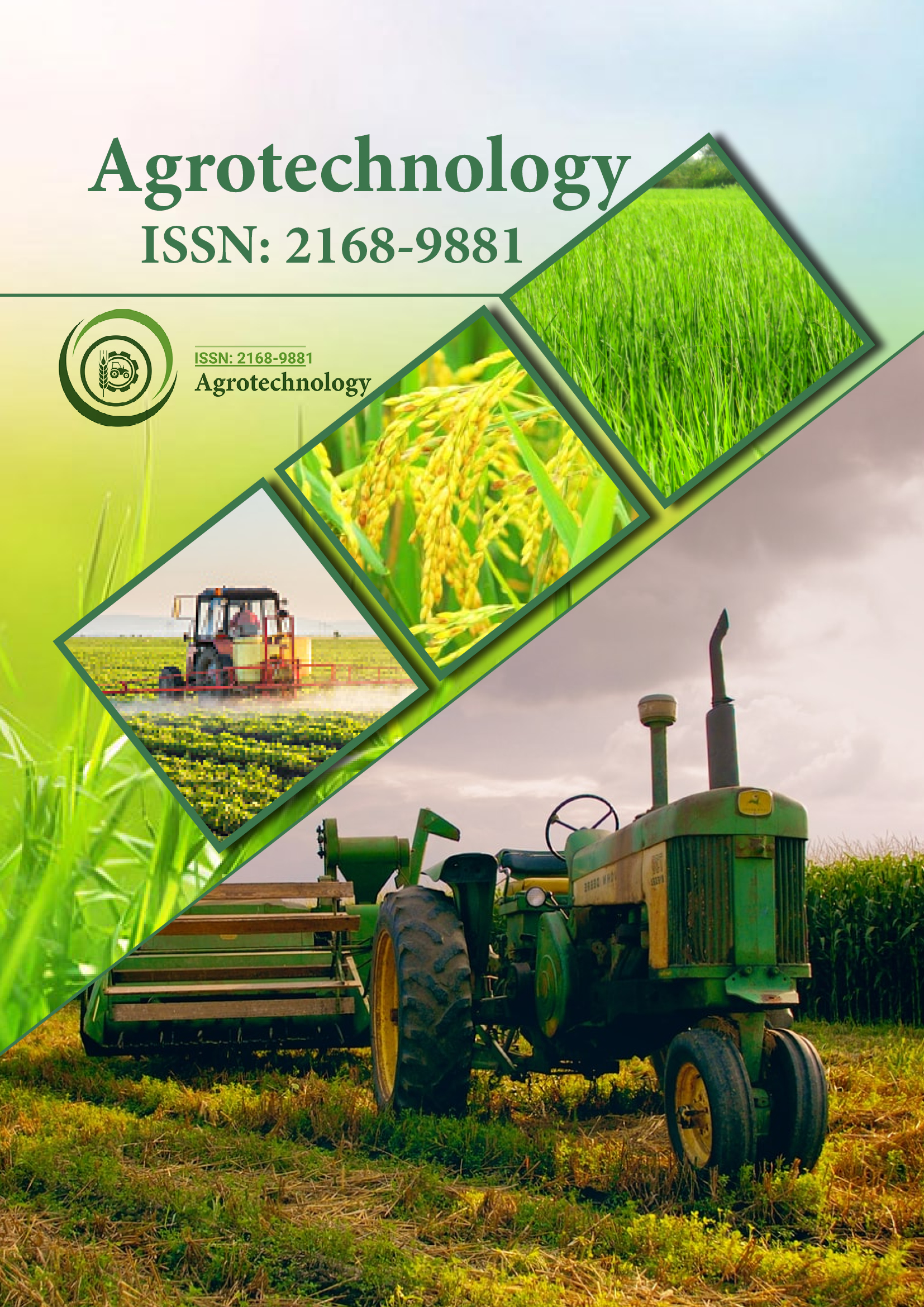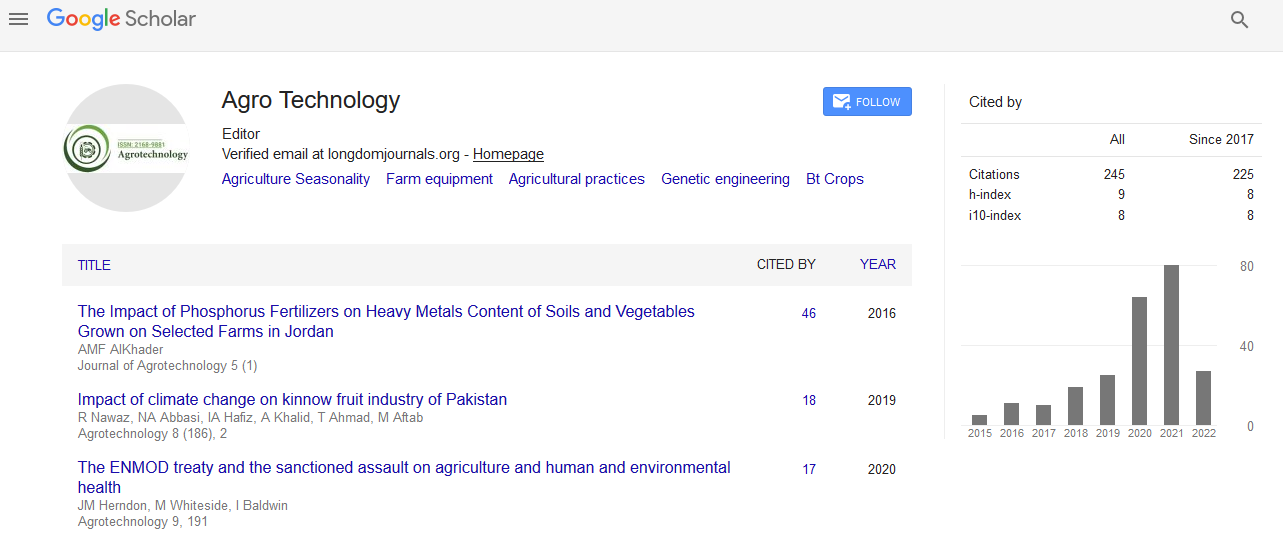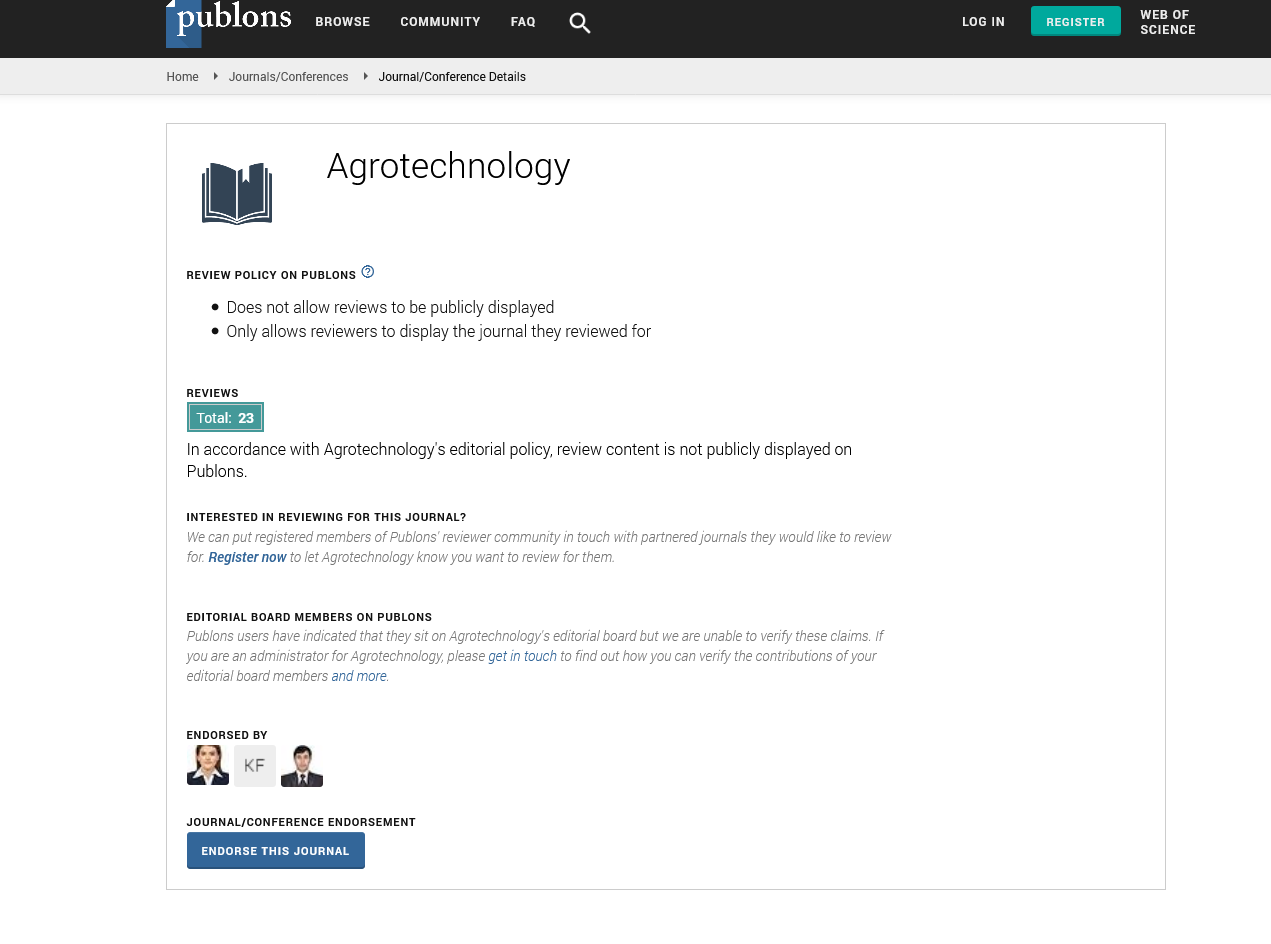Indexed In
- Open J Gate
- Genamics JournalSeek
- Academic Keys
- ResearchBible
- Cosmos IF
- Access to Global Online Research in Agriculture (AGORA)
- Electronic Journals Library
- RefSeek
- Directory of Research Journal Indexing (DRJI)
- Hamdard University
- EBSCO A-Z
- OCLC- WorldCat
- Scholarsteer
- SWB online catalog
- Virtual Library of Biology (vifabio)
- Publons
- Geneva Foundation for Medical Education and Research
- Euro Pub
- Google Scholar
Useful Links
Share This Page
Journal Flyer

Open Access Journals
- Agri and Aquaculture
- Biochemistry
- Bioinformatics & Systems Biology
- Business & Management
- Chemistry
- Clinical Sciences
- Engineering
- Food & Nutrition
- General Science
- Genetics & Molecular Biology
- Immunology & Microbiology
- Medical Sciences
- Neuroscience & Psychology
- Nursing & Health Care
- Pharmaceutical Sciences
Commentary - (2025) Volume 14, Issue 1
Low-Cost Smart Irrigation: A Scalable Solution for Sustainable Water Management
Megan Fairmont*Received: 19-Feb-2025, Manuscript No. AGT-25-28744; Editor assigned: 21-Feb-2025, Pre QC No. AGT-25-28744 (PQ); Reviewed: 07-Mar-2025, QC No. AGT-25-28744; Revised: 14-Mar-2025, Manuscript No. AGT-25-28744 (R); Published: 21-Mar-2025, DOI: 10.35248/2168-9891.25.14.399
Descripition
Water scarcity and the inefficiency of traditional irrigation methods have led to growing interest in smart technologies that optimize water use while maintaining or improving agricultural productivity. The development of a low-cost smart irrigation system represents a timely innovation that addresses both sustainability and accessibility. While many smart irrigation systems on the market provide advanced features, they are often unaffordable or impractical for smallholder farmers and rural communities. A cost-effective alternative that integrates affordable sensors, automation and data-driven decision-making can serve as a bridge between technological advancement and practical field application.
The integration of soil moisture sensors, temperature and humidity sensors and microcontroller-based control units. These components are connected to a network that can automatically trigger irrigation events based on real-time field conditions. Rather than relying on pre-set irrigation schedules that do not account for environmental variability, the system allows water to be supplied only when necessary, based on sensor thresholds. This not only minimizes overwatering but also prevents water stress in crops, which can lead to reduced yield and quality.
The affordability of such systems is achieved through the use of open-source microcontrollers like Arduino or ESP32, which are compatible with a wide range of sensors and can be easily programmed and maintained. The design can be further enhanced using Low-Power Wide-Area Network (LPWAN) technologies such as LoRa, enabling long-range communication in areas with limited internet connectivity. Farmers can receive alerts or control irrigation remotely through mobile applications or SMS-based systems, depending on the available infrastructure.
One of the most significant contributions of a low-cost smart irrigation system is its ability to make precision irrigation accessible to resource-limited settings. Traditional irrigation systems often rely on guesswork or fixed schedules, leading to significant water losses. By implementing a data-driven approach, farmers can significantly reduce water consumption while improving crop health. Studies have shown that such systems can reduce water usage by up to 50% in some cases, with corresponding improvements in energy use and crop yields.
In regions facing increasing water stress due to climate change, this technology could play an essential role in ensuring the longterm viability of agriculture. Smart irrigation supports sustainable water resource management by aligning consumption with crop demand and local environmental conditions. It also encourages a shift in agricultural practices toward conservation and resilience, which are essential in drought-prone areas.
Moreover, the ability to monitor soil and atmospheric conditions over time can help farmers better understand seasonal patterns and adjust their overall farming strategy accordingly.
However, several challenges must be addressed for widespread implementation. Even with low-cost components, the initial setup costs may still be a barrier for small-scale farmers without access to subsidies or financing options. Training is also essential, as successful use of these systems requires a basic understanding of digital interfaces and sensor calibration. Governments, NGOs and agricultural extension services have a role to play in supporting training programs and incentivizing adoption through pilot programs and grants.
The modularity of such systems presents opportunities for scalability and customization. For example, the same base system can be adapted to drip irrigation, sprinkler systems, or even hydroponic setups, depending on the crop and local water availability. Additional modules, such as solar panels for power autonomy or data logging for historical analysis, can further enhance functionality without significantly increasing costs. This makes the system highly adaptable and suitable for a range of geographic and economic contexts.
From a broader perspective, the development of affordable smart irrigation systems reflects a shift toward democratizing agricultural technology. It represents a break from the one-sizefits- all approach and instead empowers farmers to take control of their resources through informed decisions. In doing so, it contributes to the larger goals of food security, climate resilience and rural economic development. As the global population continues to grow and water resources become increasingly strained, such innovations are no longer optional but necessary.
In conclusion, the development of a low-cost smart irr igation system provides a compelling solution to the dual challenge of water scarcity and sustainable agriculture. By controlling accessible technology and focusing on user-centered design, these systems can transform water management practices at the bottom level. With continued support from research institutions, policymakers and the farming community, this innovation can help form a more efficient, resilient and equitable agricultural future.
Citation: Fairmont M (2025) Low-Cost Smart Irrigation: A Scalable Solution for Sustainable Water Management. Agrotechnology. 14:399.
Copyright: © 2025 Fairmont M. This is an open access article distributed under the terms of the Creative Commons Attribution License, which permits unrestricted use, distribution, and reproduction in any medium, provided the original author and source are credited.


